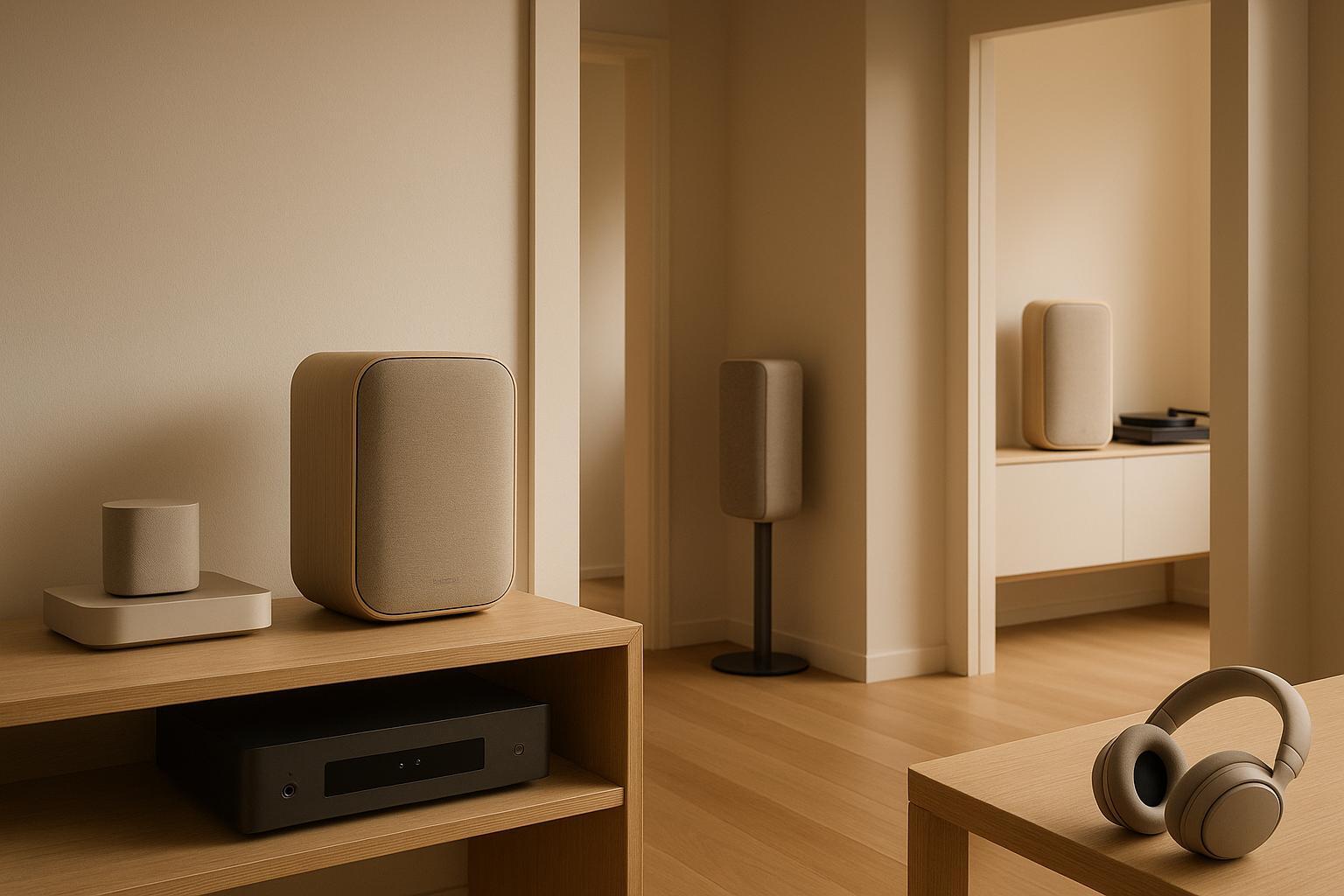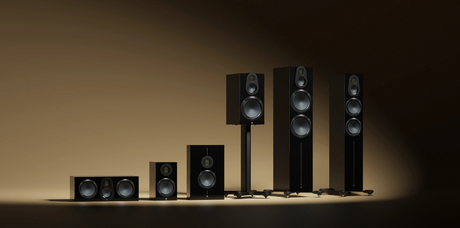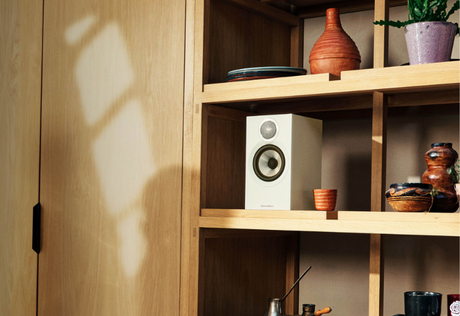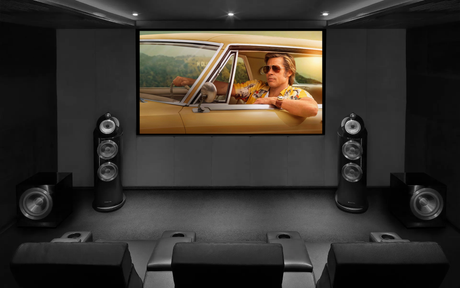A multi-room sound system allows you to enjoy music in all areas of your home with the ability to control each zone separately. It is a great solution for both everyday use and parties, when the sound sounds synchronously in all rooms. Modern Wi-Fi and Bluetooth technologies allow for easy installation of systems without complicated cable routing, and smart apps provide simple control.
Basic steps:
- Choose the right speakers: built-in, bookshelf or wireless.
- Use amplifiers that are compatible with the speakers.
- Install control systems that allow you to adjust the volume in each zone.
- Decide between wired and wireless solutions based on your home's characteristics.
Why is it worth it?
- Uniform sound throughout the house.
- Flexibility in adapting the system to the purpose of the room.
- Possibility of integration with smart home solutions.
Next, we will discuss how to properly select equipment, install the system, and optimize sound quality.
SELECTING AND INSTALLATION OF A SOUND SYSTEM FOR YOUR HOME
Equipment required for a multi-room sound system
To create an effective multi-room audio system, the most important thing is to choose the right equipment . Properly matched components ensure excellent sound quality and smooth operation in every room. Here are the main aspects of choosing speakers, amplifiers and control systems.
Speakers and amplifiers
Speakers are the heart of the entire system. AUTOGARSAS.LT offers various types of speakers, adapted to different spaces and needs.
- Built-in speakers are a solution when you want to maintain the aesthetics of a room. They are mounted directly into the walls or ceiling and are almost invisible. Brands such asKEF and Monitor Audio provide high quality, but their installation often requires the help of professionals.
- Bookshelf speakers are a great choice for those who value flexibility. They can be easily moved or repositioned. Manufacturers such as Bowers & Wilkins ,Dali , and Focal are known for their high-quality sound.
- Wireless speakers are a convenient solution that reduces the need for cables. Sonos and Audio Pro models connect via Wi-Fi and are controlled by smart apps.
- Soundbars are a popular choice for living rooms. They not only enhance the sound of your TV, but also integrate into your entire system. Brands like JBL , Yamaha , and Bose offer great soundbars.
Amplifiers are essential for speakers to function properly. It is important to choose an amplifier that meets the technical specifications of your speakers. Manufacturers such as Marantz , Cambridge Audio and Yamaha are known for their reliability and excellent sound quality.
Control systems and flow transfer devices
Control systems are what make a multi-room audio system a convenient and easy-to-manage solution. They allow you to change music, adjust volume, or switch sources in different rooms with a single touch.
- Network streaming devices , such as the Bluesound Node , WiiM Pro , or Yamaha WXC-50 , act as the brains of the system. They receive the signal from various sources, such as Spotify , Tidal , local files, or CDs, and transmit it to the speakers.
- Smart apps provide even more convenience. For example, the Sonos app lets you control your entire system with a single tap, while BluOS (used with Bluesound products) offers additional features for audio enthusiasts.
- Integration options with smart home solutions such asHDL or AJAX allow you to create automated scenarios. For example, you can set music to start playing in the kitchen at the same time as the coffee machine turns on.
Wired and wireless systems
When choosing between wired and wireless systems, it is important to consider the characteristics of your home and your personal needs.
- Wired systems offer stability and maximum sound quality. Ethernet cables provide reliable data transmission, while speaker cables provide a flawless audio signal. However, they can be more difficult to install, especially if your home has thick walls.
- Wireless systems are becoming increasingly popular due to their convenience and quick installation. Using Wi-Fi , audio is transmitted without cables, but the signal can be affected by network interference.
For comparison, here are the main differences:
| Aspect | Wired systems | Wireless systems |
|---|---|---|
| Sound quality | Maximum, without interference | Very good, depends on the network |
| Reliability | Highest | Good, there may be Wi-Fi interference |
| Installation complexity | Needs cable routing | Simple, just a power cable |
| Price | Larger due to installation | Lower installation costs |
| Flexibility | Limited after installation | Easily changeable configuration |
Hybrid solutions combine the advantages of wired and wireless systems. For example, the main speakers can be connected with wires, and the additional ones can be connected wirelessly. This provides flexibility and the ability to easily expand the system in the future.
AUTOGARSAS.LT specialists are ready to help you assess your home's needs and offer the most suitable solution. Choosing the right equipment is the first step towards an optimally functioning system.
Multi-room audio system installation step by step
Based on the importance of equipment selection discussed earlier, let's now move on to the systematic installation process. This requires careful planning, precision in installation, and proper system setup.
Planning and room selection
Start by analyzing the spaces – assess their acoustics and purpose. The living room, as the main area, should be characterized by high-quality sound , so it is worth choosing better speakers here. The kitchen and dining room can share one sound zone, and in the bedroom it is recommended to choose a quieter, lower volume mode. Moisture-resistant speakers , for example, with an IP65 protection class, are necessary for the bathroom.
Don't forget that interior details affect sound. Floor coverings, wall materials and furniture placement can change the sound quality. In apartment buildings, it is important to comply with noise level requirements to avoid inconvenience to neighbors. Once you have a clear plan, you can proceed with installation.
Installation and connections
When installing the system, follow all Lithuanian electrical safety regulations. Ensure that standard 230 V voltage and proper grounding are used according to LST EN 60364 standards. This is necessary for the system to operate reliably and safely.
If you are installing a wired system, use quality cables and protect them with conduits to ensure they are durable and safe. If you have chosen a wireless system, make sure you have a strong Wi-Fi signal. Using the 5 GHz frequency and the Wi-Fi 6 standard will reduce latency and ensure smooth audio transmission.
When installing the equipment, it is important to follow the manufacturer's instructions. The speakers on the shelves should be placed at the height of the listener's ears so that the sound is distributed evenly. After installation, proceed to the system setup.
System configuration
First, make sure all devices are connected to the same network and have fixed IP addresses. This will help prevent unexpected disconnections.
Popular sound systems like Sonos, Bluesound, or WiiM offer convenient apps like Sonos S2, BluOS Controller, or WiiM Home. They allow you to automatically discover devices on your network and configure them to your needs.
A properly configured system ensures that music plays in sync across all zones. With smart home systems like HDL or AJAX, you can set up scenarios where the sound adapts to your daily routine.
AUTOGARSAS.LT specialists offer a comprehensive installation service, which includes not only installation, but also full system calibration. This allows you to optimally adjust the sound level and frequency characteristics of each room. In addition, they provide warranty service, ensuring long-term operation of the system.
sbb-itb-02aace5
Audio synchronization and compatibility
Once the system is installed, it is important to ensure that the sound in all zones is consistent and synchronized. A properly functioning multi-room audio system requires that the sound in the different spaces play without any time difference. If the synchronization does not work smoothly, unpleasant audio delays can occur, which disrupts the listening experience.
Synchronization technologies and protocols
Modern technologies offer various solutions that allow for reliable audio synchronization. For example, Apple AirPlay 2 is perfect for iOS devices, and Google Cast is often used in the Android ecosystem. Meanwhile, professional systems such as Sonos , Yamaha MusicCast or Bluesound BluOS offer advanced solutions that reduce audio latency even in complex installations, ensuring high-quality synchronization.
How to choose the right multi-room protocol?
When choosing a synchronization protocol, it is important to consider several key criteria:
- How many zones can the system support?
- Sound quality and latency level.
- Compatibility with your existing devices.
- Ease of installation.
Professional systems often provide almost imperceptible delay, so the sound sounds the same even in large or open spaces. However, the peculiarities of Lithuanian houses, such as thick reinforced concrete wall elements, can make it difficult for a wireless signal to propagate. In such cases, hybrid solutions that combine wired and wireless technology help to avoid interference, especially in older buildings.
It is also important to pay attention to which music sources the chosen protocol is compatible with. AUTOGARSAS.LT offers a wide range of devices that support various synchronization protocols, and their specialists can help you find the best solution for your needs.
In the next part, we will discuss how to properly position speakers for the best sound quality.
Tips for optimizing sound quality for multi-room systems
From device placement to automatic adjustments, every detail contributes to consistent sound levels and quality in every area of your home. To ensure the best results, it’s important to position your speakers properly and consider the acoustics of your room. Let’s take a look at how these factors, along with advanced features, can enhance your listening experience.
Speaker placement and room acoustics
High ceilings, reinforced concrete elements, or large windows, which are common in Lithuanian homes, can affect sound propagation. To reduce unwanted reflections, it is recommended to place speakers at least 30–50 cm away from walls. This helps prevent sound distortion and ensures clearer sound.
In an open-plan home, sound can bounce around, causing echoes. Soft surfaces such as carpets or curtains can help to absorb some of the sound. In kitchen areas where hard surfaces predominate, it’s a good idea to choose directional speakers or lower the volume to make it less harsh.
In bathrooms, due to high humidity, it is necessary to use specially designed moisture-resistant speakers that ensure long-term operation and high-quality sound.
Advanced audio features
Modern sound systems offer features that automatically adjust the sound to the acoustics of the room. For example, automatic room correction technologies, such as Yamaha MusicCast or Bluesound BluOS , analyze the space and adjust the settings to make the sound as transparent and balanced as possible. In addition, EQ settings allow you to individually adjust the sound characteristics - you can boost the bass in the bedroom and the treble in the kitchen, so that the sound is suitable for each space.
The most modern systems also integrate with smart home solutions . For example, devices offered by AUTOGARSAS.LT allow you to automatically change sound profiles based on the time of day or even weather conditions.
Another useful feature is zone grouping , which allows you to control the sound in different areas of your home. For example, in the evening you can combine the living room and kitchen into one zone, while leaving the bedrooms with individual sound settings.
Professional consulting
To ensure perfect sound in every room, it is important to perform a detailed acoustic analysis and properly calibrate the system. AUTOGARSAS.LT specialists provide services tailored to the specifics of Lithuanian homes – from thick walls of Soviet-era buildings to modern energy-efficient homes with special insulation.
System calibration involves not only speaker placement but also adjusting the sound levels of each zone using professional measurement tools. Meanwhile, custom solutions allow you to create hybrid systems that combine wired and wireless solutions, avoiding signal attenuation in thick walls or large spaces. In addition, such systems are easily adaptable in the future if you want to add new zones or devices.
Conclusion: Building your own multi-room sound system
Installing a multi-room sound system is a step that can significantly improve your everyday life, allowing you to enjoy high-quality sound in all areas of your home. Success starts with careful planning, choosing the right equipment, and ends with professional installation and optimal system tuning.
When choosing devices, pay attention to the fact that they support technologies such as AirPlay or Chromecast . This will allow you to easily expand the system. For example, the Bluesound PULSE FLEX 2i wireless speakers are perfect for bedrooms or kitchens, while the Bluesound PULSE 2i, installed in the living room, can become a reliable sound foundation for the whole house. All this can be conveniently controlled in one app [1] .
The specifics of Lithuanian homes often require a combination of wired and wireless solutions to ensure the system operates stably even in difficult acoustic conditions. The right balance of these solutions ensures smooth operation and high sound quality.
In order for the system to work optimally, it is important to take into account the acoustics of specific rooms. AUTOGARSAS.LT specialists help not only to properly install, but also to calibrate the system so that it ideally suits your home environment. They also help you avoid the most common mistakes and offer solutions that are tailored specifically to your needs.
High-quality equipment combined with professional installation ensures not only great sound today, but also long-term operation of the system. Regular expert support will help maintain the system's efficiency and update technology when necessary.
All this creates not only a technologically advanced sound system, but also a special atmosphere in your home. A multi-room sound system is a way to let music become a natural part of your everyday life, accompanying you every step of the way.
FAQs
What are the benefits of a multi-room sound system and how can it improve your home environment?
A multi-room sound system is a solution that allows you to enjoy high-quality sound in every corner of your home. It allows you to create different sound zones, so you can listen to different music or other sound sources in each room, tailored to your personal needs. This is especially practical in multi-story houses or larger apartments with separate rooms.
Such systems not only improve the overall atmosphere of the home, but also help reduce noise transmission between rooms, ensuring balanced acoustics. In addition, they significantly enrich the entertainment experience - whether it's watching a movie or listening to your favorite music. A properly installed system can create the impression of a cinema or concert hall right in your home, becoming an integral part of everyday comfort.
How to choose the right speakers and amplifiers for a multi-room sound system?
When choosing speakers and amplifiers for a multi-room sound system, it's important to consider the size, acoustics, and purpose of each room. These factors directly affect the sound quality and overall experience.
Speakers: If your room is small, compact speakers are best, as they don't take up much space but still deliver quality sound. Larger spaces may require more powerful speakers or multiple speakers to distribute sound evenly. The acoustics are also affected by the surfaces in the room - hard surfaces, like floors or windows, reflect sound, while soft surfaces, like carpets or curtains, absorb it. It's also important to consider what the main purpose of the room will be - whether you'll be listening to music, watching movies, or just want background sound.
Amplifiers: The power of the amplifier should be matched to the speakers and the size of the room. If the amplifier is too weak, it may not be able to drive the speakers properly, and an amplifier that is too powerful may damage them. For a multi-room system, it is important to choose an amplifier with a sufficient number of channels. It is also useful to have features such as network connectivity or app control to make it easier to control the system.
AUTOGARSAS.LT offers a wide range of speakers and amplifiers as well as expert advice to ensure your multi-room sound system runs smoothly and meets all expectations.
What to look for when choosing between a wired and wireless sound system?
When choosing a sound system, the essential criteria are sound quality , signal stability , and ease of use .
Wired systems usually provide a more stable signal and higher sound quality. They are the ideal choice for those who value impeccable sound. Such systems are especially suitable for home theaters or professional sound recording, where every detail of the sound matters.
Wireless systems , on the other hand, offer convenience and flexibility. They are easier to install, and space planning is less important because there are no wires to restrict their placement. However, it should be noted that wireless systems can be more susceptible to interference or signal loss – especially in large rooms or areas with many obstacles, such as walls.
If stability and the highest sound quality are your priority, choose a wired system. However, if you want more mobility and ease of use, a wireless system may be a more practical solution for your needs.








